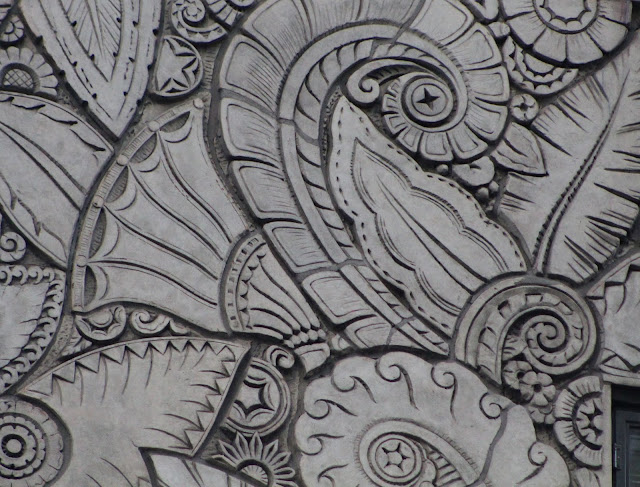A few entries back I showed you some of the interesting architectural additions to buildings I noticed while visiting New York City. Today I want you to look with me at some other decorations that make New York City interesting.
 I was with a group of people who was visiting the Presbyterian Ministry at the United Nations. It seemed that the street signs were making an editorial statement as we entered the building where we would meet. We entered the Church Center then went to the 7th floor, passing the offices of several other denominations with whom the Presbyterians work in seeking justice as they lobby representatives of the United Nations member countries.
I was with a group of people who was visiting the Presbyterian Ministry at the United Nations. It seemed that the street signs were making an editorial statement as we entered the building where we would meet. We entered the Church Center then went to the 7th floor, passing the offices of several other denominations with whom the Presbyterians work in seeking justice as they lobby representatives of the United Nations member countries.
Contrary to what this sign says, people should never find New York "BORING."

Our trip was to learn what Presbyterians and other Christian denominations are doing to work toward justice, to bring peach and what we, as individuals may do to help.
While there, several of us made ribbons with wishes of peace that was to be woven into a memorial for the ten-year remembrance of the World Trade Center destruction; the plane crashes that not destroyed two landmark buildings but also destroyed the lives of people of many religious faiths, many nationalities. It was a time to remember the lives lost in the fall, including the scores of fireman and policemen who were there to help.
Both that day and on this trip we were changed by the imprint of what we learned, what we saw and what we felt.
Animals and odd beings are the norm.
 I was with a group of people who was visiting the Presbyterian Ministry at the United Nations. It seemed that the street signs were making an editorial statement as we entered the building where we would meet. We entered the Church Center then went to the 7th floor, passing the offices of several other denominations with whom the Presbyterians work in seeking justice as they lobby representatives of the United Nations member countries.
I was with a group of people who was visiting the Presbyterian Ministry at the United Nations. It seemed that the street signs were making an editorial statement as we entered the building where we would meet. We entered the Church Center then went to the 7th floor, passing the offices of several other denominations with whom the Presbyterians work in seeking justice as they lobby representatives of the United Nations member countries.Our visit included a tour of the United Nations. My most memorable site was the Meditation Room.
The stained glass mural was given no description nor did it need to one.
Faces from throughout the world and throughout history gazed at each other and at me.
The goal of the United Nations is Peace
When we make war we affect all of creation both human . . .
. . . and non-human. The large Mola on the wall portrays more of the world threatened by our battles.
The United Nations was formed to bring an end to wars.
To bring justice to a broken world.
Our trip, though, was not all meditative.
The rooms of the Presbyterian Ministry provided us a view of the City that we would soon explore.
From city icons such as its bridges . . .
to a view that is all New York.
What you are looking at, to the left, are the street markings showing what is buried beneath. From sewers to electric lines to telephone lines to subway lines. The streets are marked in a code that hopefully someone understands.
New York is an exciting place to be.
A place full of movement.
A place to savor the flavors,
Contrary to what this sign says, people should never find New York "BORING."

Our trip was to learn what Presbyterians and other Christian denominations are doing to work toward justice, to bring peach and what we, as individuals may do to help.
While there, several of us made ribbons with wishes of peace that was to be woven into a memorial for the ten-year remembrance of the World Trade Center destruction; the plane crashes that not destroyed two landmark buildings but also destroyed the lives of people of many religious faiths, many nationalities. It was a time to remember the lives lost in the fall, including the scores of fireman and policemen who were there to help.
Both that day and on this trip we were changed by the imprint of what we learned, what we saw and what we felt.















































